Abstract
Previous studies on histamine release by corticotropin peptides and melittin peptides were extended, leading to the identification of a synthetic peptide intermediate, Lys(Z)-Arg(NO2)-Arg(NO2)OMe, (I) as an active non-cytolytic histamine releaser from rat mast cells. However, significant differences in the releasing capacity of optical isomers of this compound, and of Lys-Lys-Arg-ArgOMe [methyl ester of corticotropin-(15-18)-tetrapeptide; 'basic core'] were observed, with the L-forms being markedly more active. A study of various analogues of the tripeptide compound (I) indicated that the structural basis for mast-cell triggering by such peptidic agents was highly specific. The relevance of these observations to the immunologically induced histamine-release processes is discussed.
Full text
PDF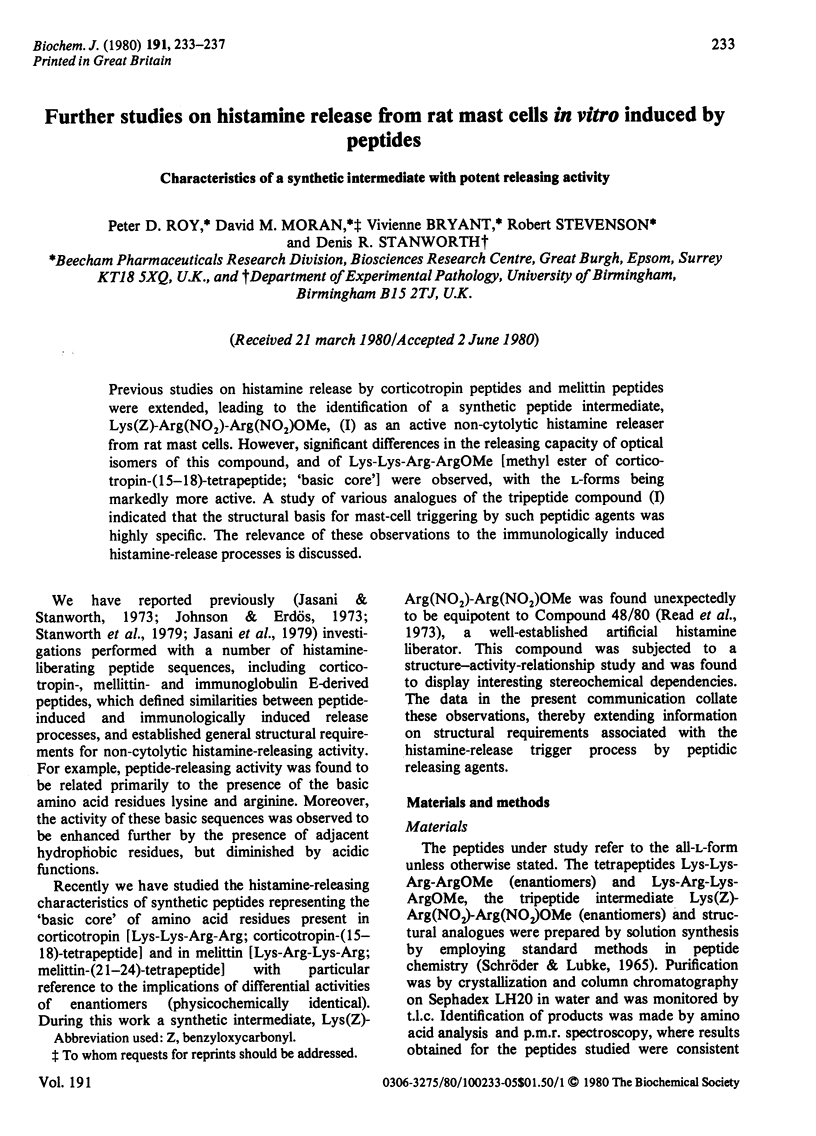
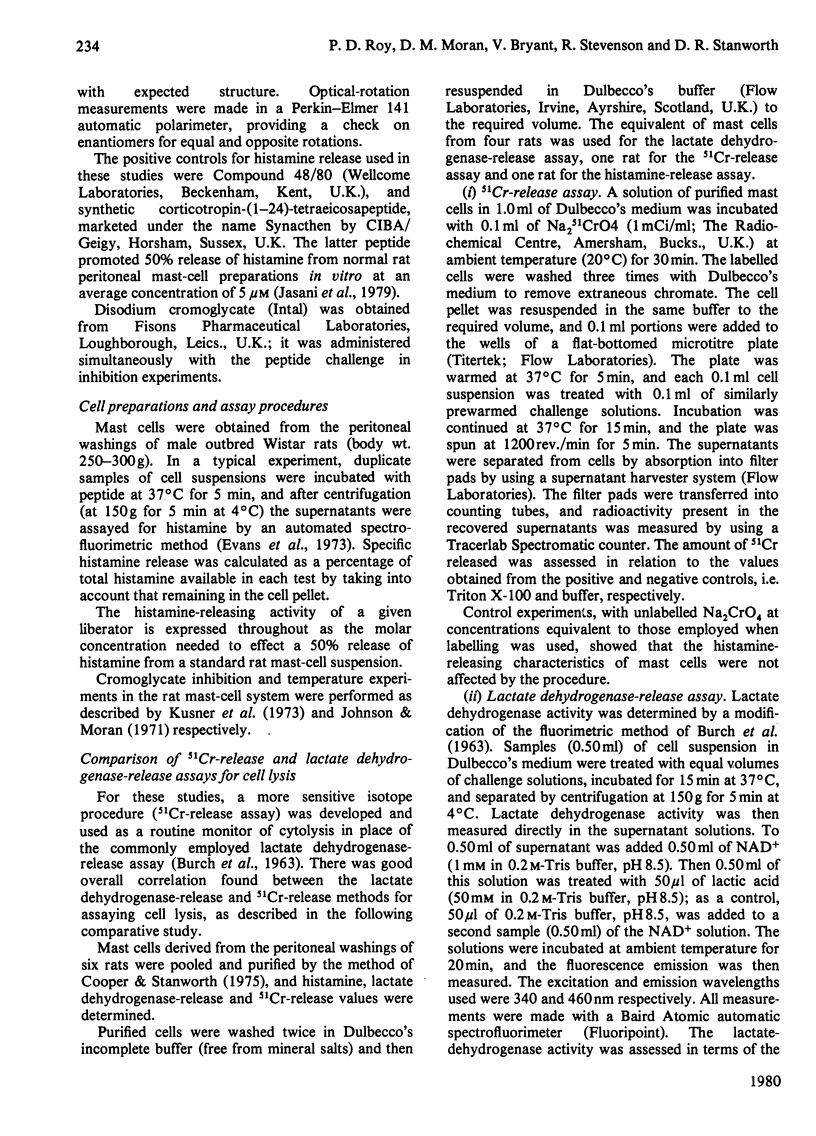
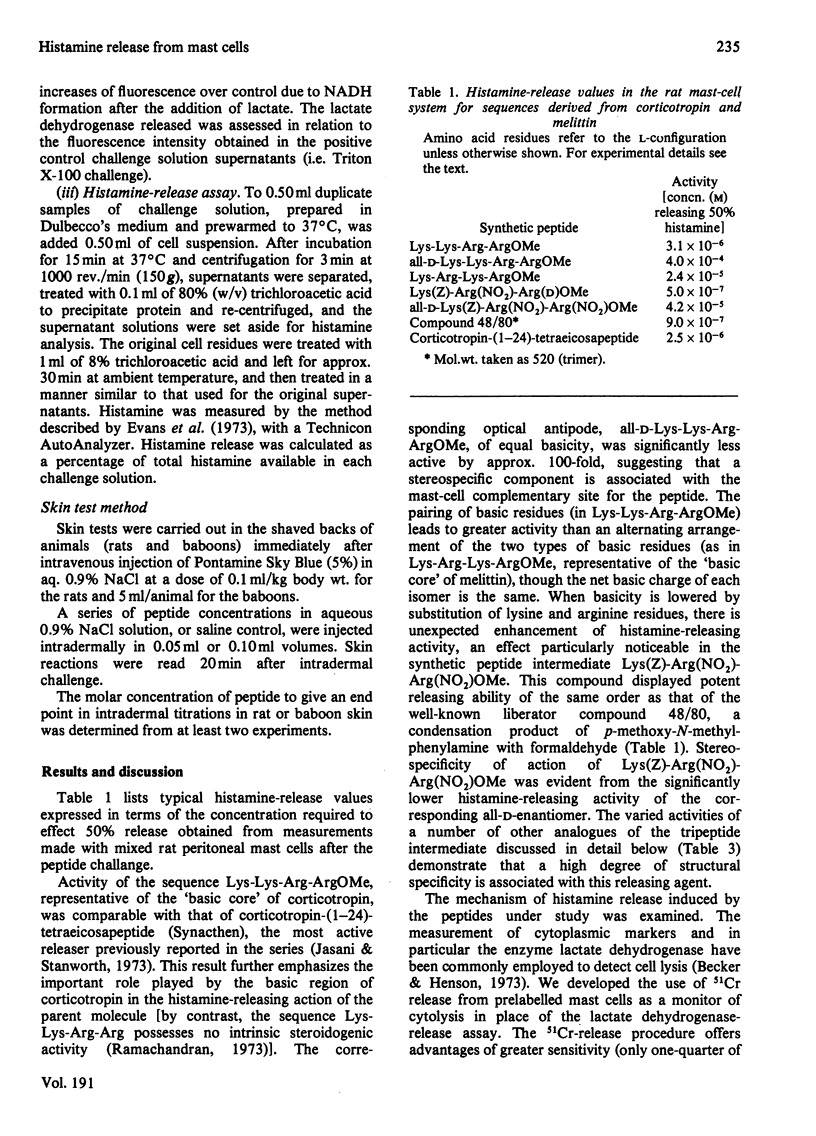
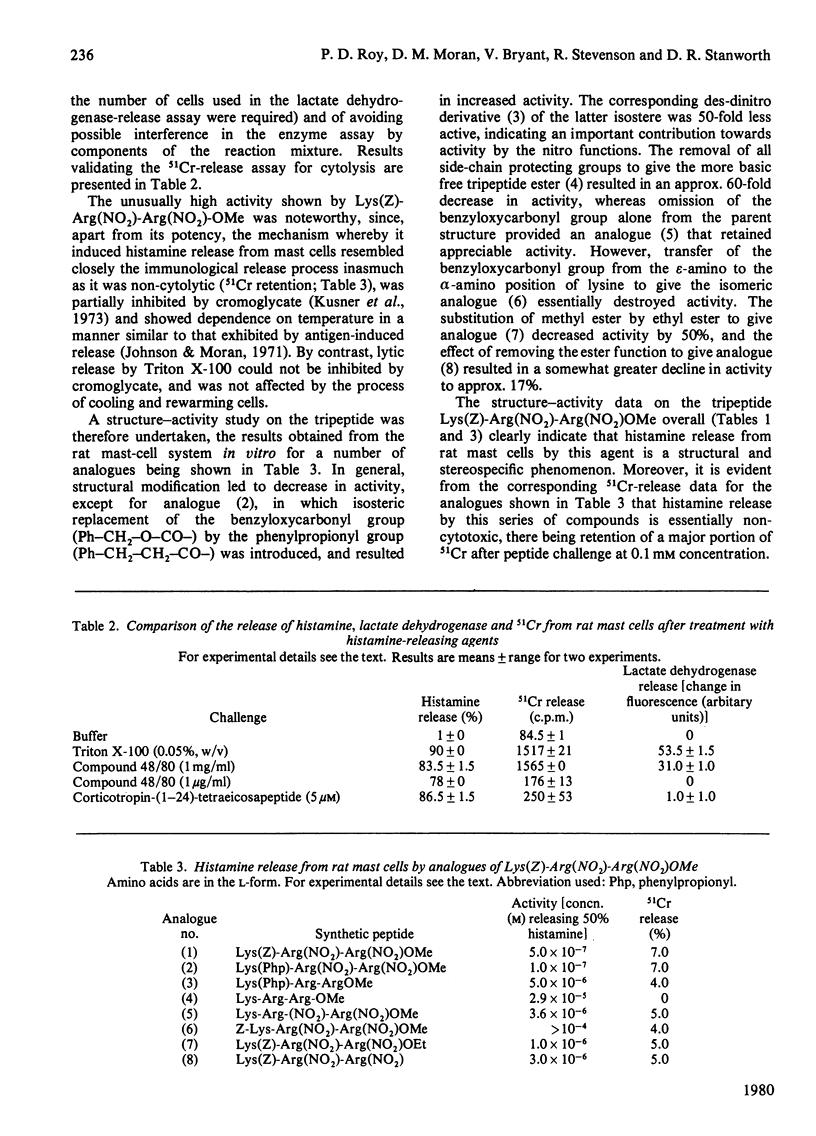
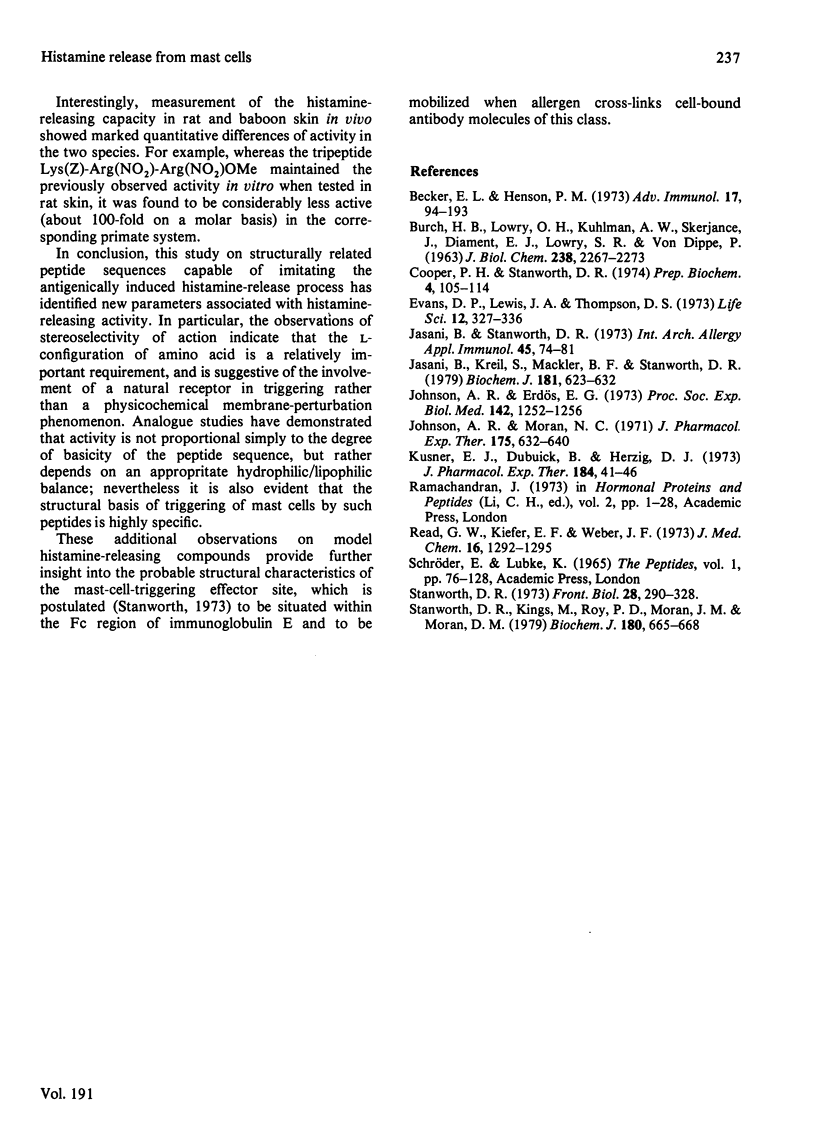
Selected References
These references are in PubMed. This may not be the complete list of references from this article.
- BURCH H. B., LOWRY O. H., KUHLMAN A. M., SKERJANCE J., DIAMANT E. J., LOWRY S. R., VON DIPPE P. Changes in patterns of enzymes of carbohydrate metabolism in the developing rat liver. J Biol Chem. 1963 Jul;238:2267–2273. [PubMed] [Google Scholar]
- Becker E. L., Henson P. M. In vitro studies of immunologically induced secretion of mediators from cells and related phenomena. Adv Immunol. 1973;17:93–193. doi: 10.1016/s0065-2776(08)60732-4. [DOI] [PubMed] [Google Scholar]
- Cooper P. H., Stanworth D. R. A simple and reproducible method of isolating rat peritoneal mast cells in high yield and purity. Prep Biochem. 1974;4(2):105–114. doi: 10.1080/00327487408068766. [DOI] [PubMed] [Google Scholar]
- Evans D. P., Lewis J. A., Thomson D. S. An automated fluorimetric assay for the rapid determination of histamine in biological fluids. Life Sci II. 1973 Apr 8;12(7):327–336. doi: 10.1016/0024-3205(73)90366-4. [DOI] [PubMed] [Google Scholar]
- Jasani B., Kreil G., Mackler B. F., Stanworth D. R. Further studies on the structural requirements for polypeptide-mediated histamine release from rat mast cells. Biochem J. 1979 Sep 1;181(3):623–632. doi: 10.1042/bj1810623. [DOI] [PMC free article] [PubMed] [Google Scholar]
- Jasani B., Stanworth D. R. Studies on the mast cell triggering action of certain artificial histamine liberators. Int Arch Allergy Appl Immunol. 1973;45(1):74–81. doi: 10.1159/000231005. [DOI] [PubMed] [Google Scholar]
- Johnson A. R., Erdös E. G. Release of histamine from mast cells by vasoactive peptides. Proc Soc Exp Biol Med. 1973 Apr;142(4):1252–1256. doi: 10.3181/00379727-142-37219. [DOI] [PubMed] [Google Scholar]
- Johnson A. R., Moran N. C. Inhibition of the release of histamine from rat mast cells: the effect of cold and adrenergic drugs on release of histamine by compound 48-80 and antigen. J Pharmacol Exp Ther. 1970 Dec;175(3):632–640. [PubMed] [Google Scholar]
- Kusner E. J., Dubnick B., Herzig D. J. The inhibition by disodium cromoglycate in vitro of anaphylactically induced histamine release from rat peritoneal mast cells. J Pharmacol Exp Ther. 1973 Jan;184(1):41–46. [PubMed] [Google Scholar]
- Read G. W. Compound 48-80. Structure-activity relations and poly-THIQ, a new, more potent analog. J Med Chem. 1973 Nov;16(11):1292–1295. doi: 10.1021/jm00269a016. [DOI] [PubMed] [Google Scholar]
- Stanworth D. R., Kings M., Roy P. D., Moran J. M., Moran D. M. Synthetic peptides comprising sequences of the human immunoglobulin E heavy chain capable of releasing histamine. Biochem J. 1979 Jun 15;180(3):665–668. doi: 10.1042/bj1800665. [DOI] [PMC free article] [PubMed] [Google Scholar]


